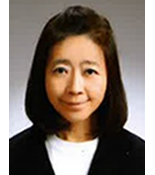
Toshiko Sawaguchi
National Institute of Public Health, Japan
Title: Latent Forensic pitfall associated with Substancial Toxicological Problem in the Maternal and Child Health in Japan
Biography
Biography: Toshiko Sawaguchi
Abstract
AIM: In recent health-medical policy, comprehensive approach has been applied not only health for elderly people but also maternal & child-health. Using the plural keywords such as care, rehabilitation, health care, medical care, prevention, home care, linkage with medical treatment and self-reliance support, spatial regional comprehensive care system has been being structured. Also as for maternal and child health, spatiotemporal comprehensive system since pregnancy till child care period has been being prepared. In this process, latent pitfall associated with substantial toxicological problem in the maternal & child health could be suggested. During foetus and new-born period, without consent of child oneself, maternal and new-born intake of pharmacies and drugs could be happened and the public statistical recognition would be difficult in some cases. Here, the process has been reported to recognize this latent pitfall will report.
METHOD:1) To recognize the background of administration of pharmacies during perinatal period and pregnancy, real status and index of hazard and toxicity and the policy reaction of those were investigated using Japanese and International references and the administrative direction were investigated. 2) The definite opinion that the socialization of problems are dominant to pick up as administrative subjects. Here, not via media to formalize health policy issues, via academic societies the existence of latent pitfall was discussed through the three symposiums such as the Japanese Society of Public Health, Japanese Society of Clinical Toxicology and Japanese Association of Criminology. The titles of three symposiums are the followings: Administrative reaction to substantial problems in regional comprehensive care, hidden toxicological problems in maternal and child health and Correctional facilities and regional sustained community life support centres.
RESULTS: 1) As for the recognition of hazard and toxicity, Japan has accepted more strict view than other international countries and also has accepted pregnancy contraindicated drug administration. Totally if some risk does have existed some progress could be considered if some goodness will be expected. Stimulant products and stimulant similar products are secreted in maternal milk and seemed to be breastfeeding contraindicated. Administration of stimulants to pregnant mothers who are the neurodevelopmental Disorders such as ADHD, LD and ASD etc. should be considered in near future. As for the index, it should be considerate if the developmental indexes such as Denver’s Developmental Scale could be used or not as the index of hazard and toxicity of pregnancy. 2) Contraindicated drug administration. Just teratogenicity could be considered as before. 3) In Japanese regional comprehensive care system, the regional transition support associated with maternal and infant toxicology and the outcome persons from correctional facilities and Regional Sustained Community Life Support Centres.
4) The latent pitfall and ignore of new-born and foetus toxicological situation has come from the non-existence of statistic score of living persons and also dead persons in Japan. 5) On the other sides, the outcomes between European and American Substantial Epidemiology and Japanese Substantial Epidemiology was different and Japan has the dominant role to possible evidence in this field to the international colleagues in this area

